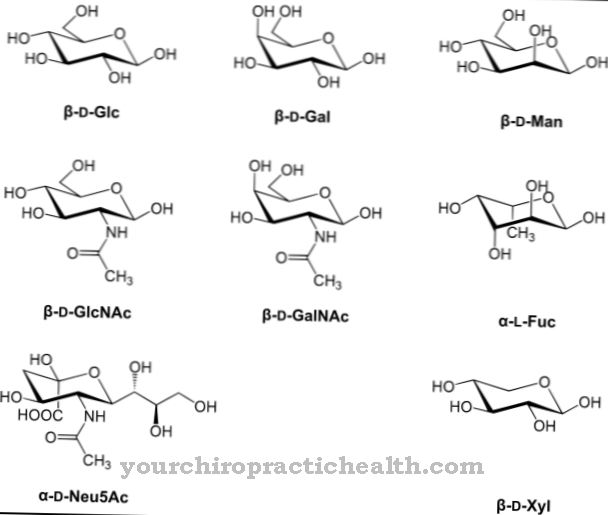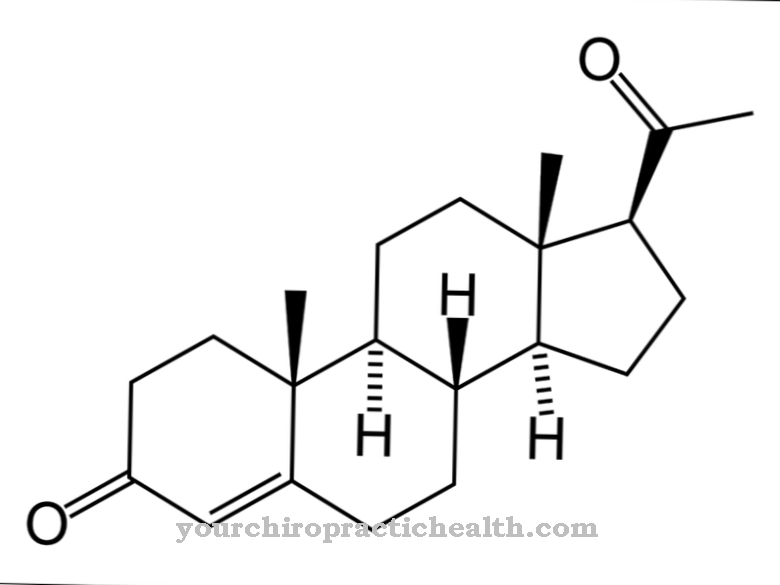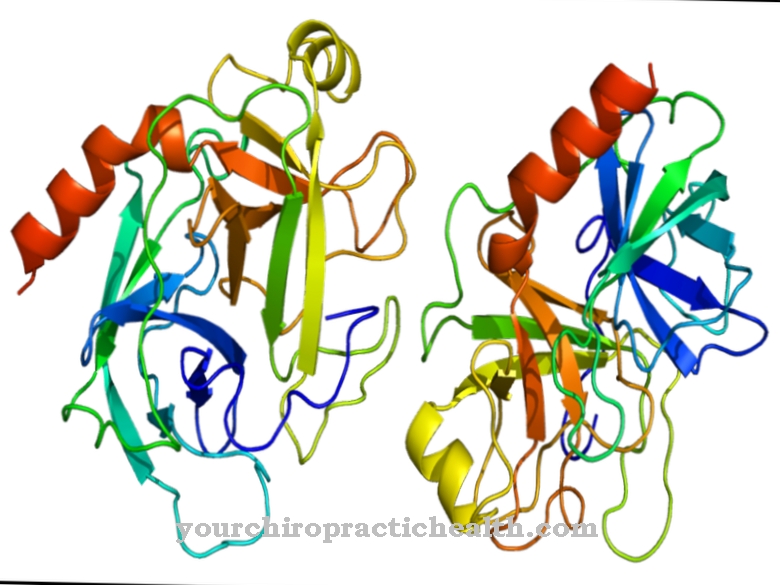Relaxin is a hormone that the female body produces during pregnancy. Among other things, it affects the connective tissue and changes its properties in order to make it more flexible and thereby prepare for birth. Medicine also uses relaxin to treat heart disease.
What is relaxin?
Relaxin is a peptide hormone that participates in various processes in the human body. Peptide hormones are hormones that are insoluble in fat.
They are made up of amino acids linked by a peptide bond. In this type of bond, two amino acids are linked by fusing the carboxyl group of one amino acid with the amino group of the other. In doing so, they split off water. In this way, long chains of amino acids can arise that, due to their biochemical properties, fold in space. Only then do the proteins acquire their characteristic three-dimensional structure.
The shape of the macromolecule is not arbitrary, but has a decisive influence on the functioning of the hormone. In its structure, relaxin is similar to the hormone insulin, which regulates blood sugar. Insulin and relaxin are similar in their building blocks: They consist of two amino acid chains. Two disulfide bridges connect the two amino acid chains with each other.
Function, effect & tasks
Medicine discovered relaxin primarily in its role as a pregnancy hormone. The woman's body produces relaxin after the fertilized egg has implanted in the lining of the uterus.
The hormone changes the properties of the connective tissue: Among other things, relaxin changes the structure of the cells in the canal of the cervix. The hormonal stimulation widens the passage and prepares the female body for childbirth. In addition, Relaxin widens the cervix. Without these adjustments, natural birth would not be possible. However, relaxin also leads to some unpleasant side effects. Pregnant women often suffer from water retention. Relaxin provides one reason for this: it manipulates the settings of the receptors that control the volume in body tissue and the osmosis.
During pregnancy, therefore, the normal fluid balance gets mixed up and additional water accumulates between the individual cells: the tissue swells. The feet and calves are particularly often affected, as the fluid in the legs has to counteract both osmotic regulation and gravity. Pregnant women may find the water retention uncomfortable or even suffer from pain due to the strong pressure; however, they are not directly harmful to health. Recent findings show that the functions of relaxin are more diverse than initially assumed. Medicine is also using the hormone more and more specifically to treat illnesses, for example after acute heart failure. Science now knows three variants of the peptide hormone.
Both relaxin-1 and serelaxin (relaxin-2) play a role in pregnancy. Relaxin-3, on the other hand, seems to be involved in neuronal processes and has a somewhat lower mass in comparison.
Education, occurrence, properties & optimal values
Relaxin is mainly produced in the ovaries, in the corpus luteum. The corpus luteum is the empty follicle after ovulation - in a sense the envelope in which a single egg cell was located. The corpus luteum is part of the ovary. If the egg cell is not fertilized, the corpus luteum degenerates into the corpus albicans a few days after ovulation. It owes its name to the whitish, scar-like surface.
However, if a sperm fertilizes the egg, the corpus luteum does not develop into the corpus albicans, but into the corpus luteum graviditatis. The hormone chorionic gonadotropin stimulates the transformation. The corpus luteum graviditatis is mainly responsible for the relaxin synthesis. The natural sciences also refer to the starting material for the synthesis of relaxin as a precursor. This is a preliminary stage of the actual hormone. Enzymes split off two amino acid chains from the precursor, which are converted into the final hormone in the further course of the synthesis. The corpus luteum graviditatis also produces progesterone.
Progesterone stimulates the growth of the uterine lining and prepares it for the egg to implant. During pregnancy, progesterone interrupts the maturation process of the rest of the follicles in the ovaries. This way, no further ovulation can occur until the pregnancy has ended and normal hormonal balance is restored.
Diseases & Disorders
Medicine has long suspected a number of connections between relaxin and various diseases. For example, she hopes a variant of relaxin, serelaxin (relaxin-2), will provide better treatment options for acute heart failure.
Serelaxin induces several hemodynamic changes in the human body even without pregnancy; Among other things, it ensures that the kidneys, lungs and other organs are better supplied with blood. Doctors therefore use Serelaxin to alleviate the symptoms of cardiac patients - for example in the regeneration phase after acute heart failure or in the case of heart failure. In addition, the research was able to establish a connection between relaxin and cancer. A substance that is similar to relaxin could therefore promote tumor growth and the destruction of tissue.
The relaxin receptor also appears to be involved in the development of metastases. However, the exact processes are very complex; numerous other substances are also involved in these reactions. In addition to the physical reactions to relaxin, the hormone also appears to have psychological effects. Research suggests that relaxin, along with other hormones, contributes to the development of postpartum depression and other mental disorders that can be triggered by pregnancy and childbirth.


.jpg)










.jpg)

.jpg)
.jpg)











.jpg)